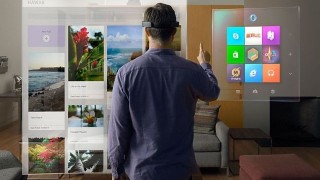
Microsoft is working on a new product called the HoloLens, and it has tech users everywhere abuzz with excitement. Reportedly, it delivers to the end participant a world of virtual reality, similar to the Oculus Rift which is owned by Facebook. According to those who have tested the Microsoft HoloLens, the equipment allows the user to experience virtual reality but still be connected to the real world. Oculus Rift, on the other hand, immerses the wearer completely.
Certainly there will be products developed in the future that will provide alternatives to the Microsoft HoloLens and the Oculus Rift alike, but there is another alternative available no one is discussing: re-connecting with reality instead of escaping ever further into virtual reality.
Much has been written about the dangers of virtual reality. The first and foremost concern is addiction. Already in Asia, there have been so many deaths caused by video game addiction that in-patient treatment centers have been set up to treat at-risk populations.
Current video game addicts in the U.S. have suffered failed marriages, lost jobs and even deep vein thrombosis as a result of sitting too long at the computer or television; and this is all without the addition of equipment like the Microsoft HoloLens or Oculus Rift. What will video game manufacturers and companies like Microsoft and Facebook do to address these issues? Certainly the addition of a virtual reality headset will propel those already addicted into the physical danger zone, and those who are on the fence, but not yet hooked, into extreme addiction.
It has been proven beyond a shadow of a doubt that video games and other forms of screens are highly addictive. In fact, they have been found in studies to be as addictive as illegal streets drugs and more addictive than smoking, drinking or gambling.
A recent study done with college students who were forcibly removed from technology for 24 hours showed that those participants suffered from extreme physical withdrawal symptoms when they were not allowed to touch their screens. Those symptoms included shaking, sweating, nausea, heart palpitations, anxiety, depression, extreme panic and confusion.
Follow up studies have confirmed the results of that study, which was performed a few years ago, well before the introduction of virtual reality headsets into the marketplace.
Technology addiction is a growing problem that is being completely ignored by the mainstream media and kept under wraps by technology manufacturers. Media outlets do not want to lose major advertisers and of course, it is not in the best interest of tech manufacturers to warn the public about the vast dangers of their products.
Tech enthusiasts and angry gamers will label these concerns as “ignorant” or as “moral panic,” and yet there is no explanation accompanying those labels about why people are dying every single day due to their addiction to their gadgets. Just look at texting and driving. But what we have seen so far is nothing compared to what is going to happen when Microsoft’s HoloLens arrives on the shelves.
Besides addiction, there is the growing concern about people being disconnected from other humans. This results in deteriorating family relationships, lack of empathy, loss of social skills and a list of other problems. When everyone is walking around with a Microsoft HoloLens on their heads, the problem is going to be amplified by a billion.
There is an alternative, and that is to just say no to screens of all sorts. Take off the headsets, put down the phones, close the computers and reconnect with other human beings while you still can, because if Microsoft and similar manufacturers have their way, there may soon come a day when you will look around and realize that is not a possibility any more.
Image credit: digita.it
